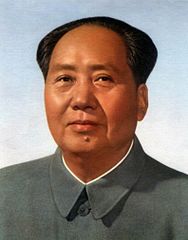China

After WWII China suffered a civil war between the Nationalists or Kuomintang, led by Chiang Kai-Shek (president of the Republic), and the Communists, led by Mao Zedong (Mao Tse-tung). Mao led a communist revolution which Chiang Kai-shek wanted to put down. Mao’s final victory took place in 1949. Chiang Kai-shek and his supporters left China and took refuge on Formosa, where they created the so-called Republic of China (Taiwan).
The People’s Republic of China was eventually proclaimed by Mao Zedong on 1 October 1949. The new republic became a communist regime where there was a fierce repression of the opposition and complete control of the society. The control was stronger during the Cultural Revolution (1967-1971), which made people leave their traditional ways of life.
Chinese economy was based on two fields:
- Collectivisation of the land, which was organised in communes, which were self-sufficient.
- Promotion of heavy industry after 1958; the so-called Great Leap Forward.
China invaded Tibet in 1950 and influenced over the neighbouring countries, such as North Korea, Mongolia, Laos, Cambodia or North Vietnam.
China and the USSR had excellent relations after the Revolution. Hence. They signed a treaty of friendship. However, Mao’s communist theories differed a lot from the USSR after Stalin’s death and he considered it was a treason of Marxist principles. Hence, Maoism criticised the Soviet policy and created its own economic system away from Soviet principles.